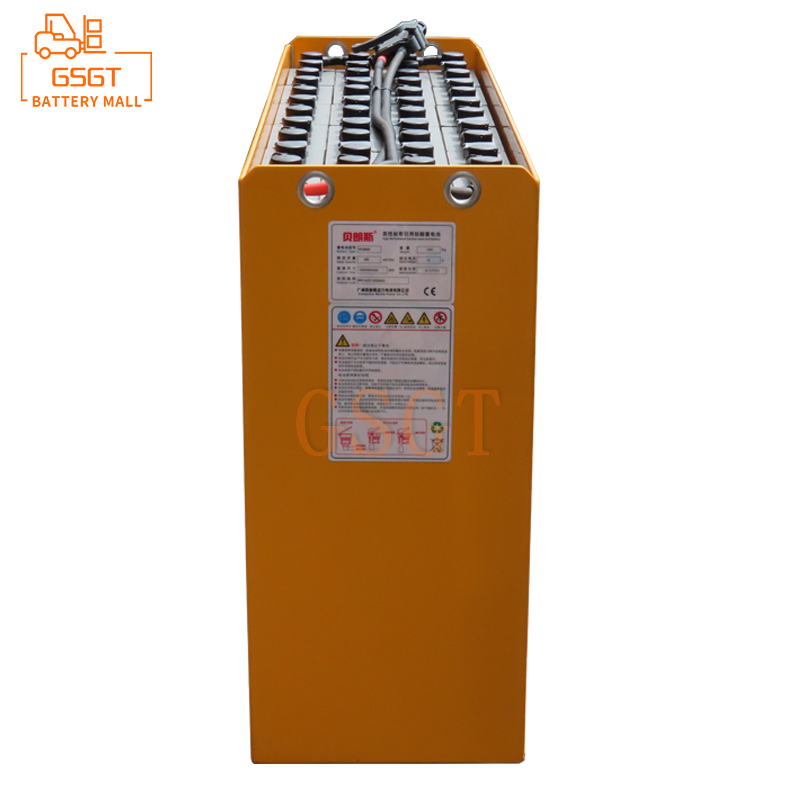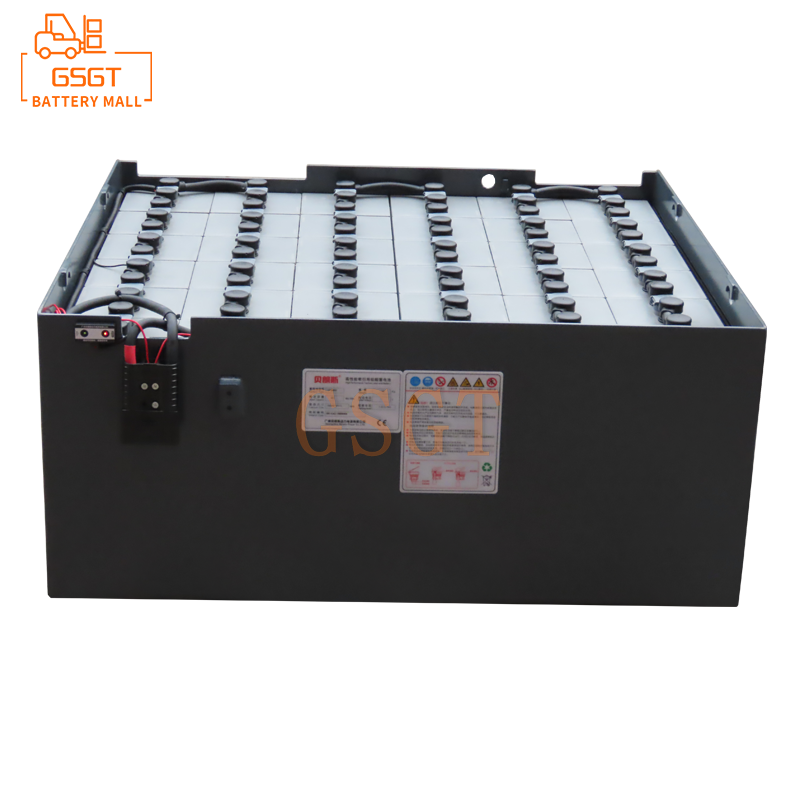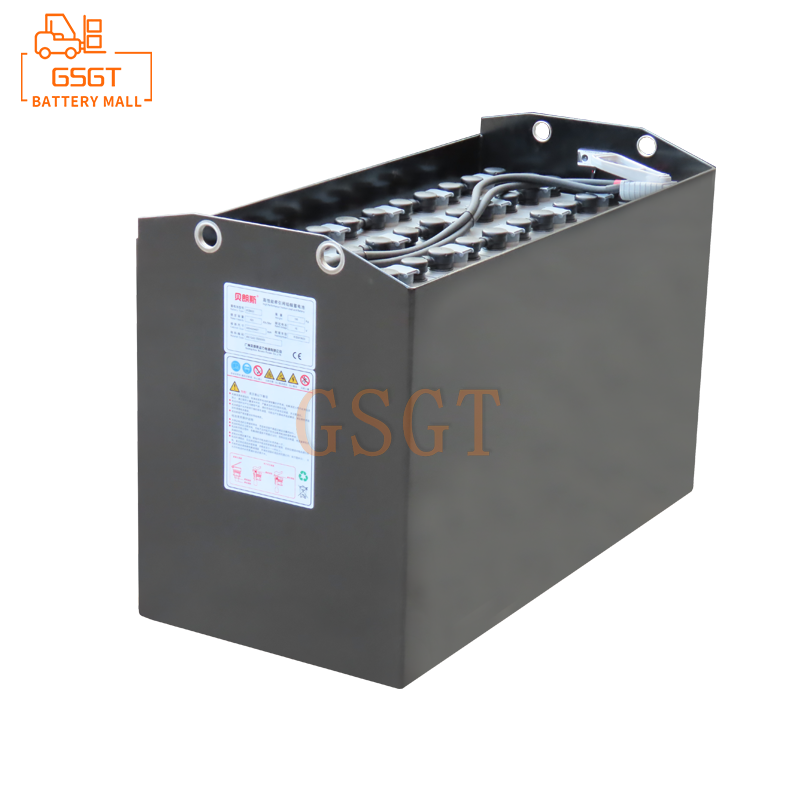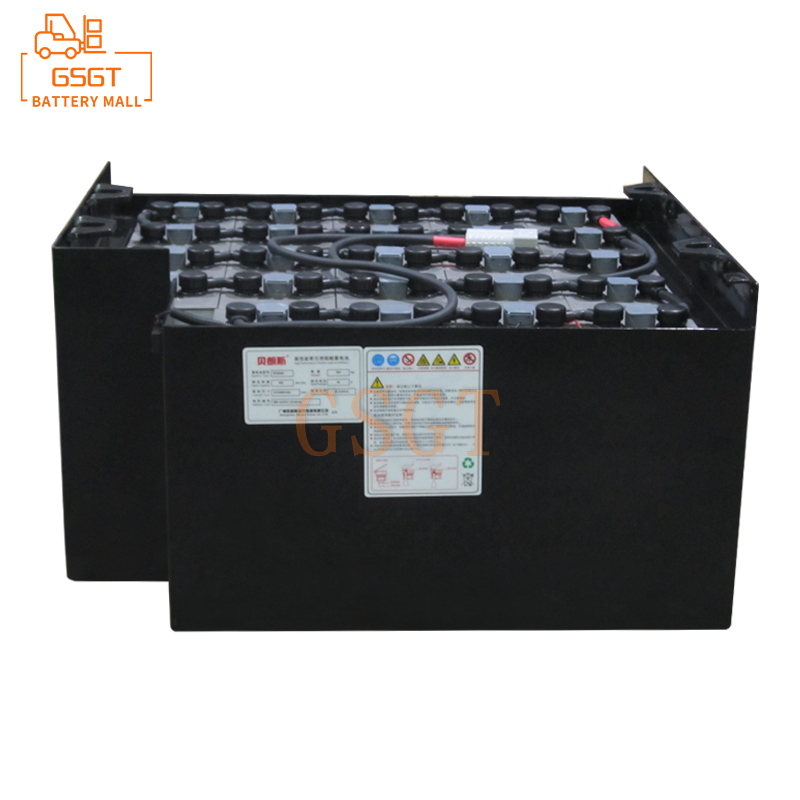Time:2025-03-03 14:44:10
Browse:354
As the core power source of logistics warehousing, port handling and other scenarios, the stability of forklift lead-acid batteries directly affects the operation efficiency. However, frequent battery failures caused by extreme conditions and improper operation have become the "invisible killer" of enterprise operations. To this end, GSGT issued the "Forklift lead-acid Battery Troubleshooting White Paper" to directly address the four high frequency problems and provide systematic solutions.
First, the fault phenomenon: no charging or charging time is abnormally extended
Technical diagnosis
◆Possible causes: plate vulcanization, abnormal electrolyte density, charger parameters do not match
●Troubleshooting steps:
1.Use a density meter to detect the specific gravity of the electrolyte (normal value 1.24-1.28g/cm³). If the specific gravity is too low, add distilled water;
2.Check whether battery terminals are oxidized, sand them with sandpaper, and apply lubricant.
3.Use a professional detector to measure the single cell voltage, the difference > 0.05V needs to be balanced charging.
Industry advice
▶ Avoid deep battery discharge (DOD > 80%)
▶ Choose intelligent pulse repair charger, regular desulfurization maintenance
Second, the fault phenomenon: the capacity drops sharply, and the endurance is less than 50% of the nominal value
Technical diagnosis
◆Possible causes: active material shedding, aging of partition, serious self-discharge
●Troubleshooting steps:
1.Eye check the sediment thickness at the bottom of the battery, if it exceeds 1/3 of the plate height, the battery needs to be replaced;
2.Stand for 48 hours to measure the open circuit voltage, voltage drop > 0.2V/ day indicating abnormal self-discharge;
3.The internal resistance tester detects that the internal resistance value exceeds 25% of the initial value to determine aging.
Industry advice
▶ Capacity test every 3 months for high frequency usage scenarios (CCA value detection)
▶ Avoid long-term high-temperature environment storage (> 40℃ to accelerate aging)
Third,, the fault phenomenon: shell bulge or leakage
Technical diagnosis
◆Possible causes: Overcharge leads to poor gas discharge, mechanical impact, and seal failure
●Emergency treatment:
1.Stop use immediately, wear protective equipment and move to a ventilated place;
2.Neutralize the leaking electrolyte with sodium bicarbonate solution;
3.Check whether the charger voltage exceeds the standard (the floating charging voltage should be 13.5-13.8V/12V battery).
Industry advice
▶ Select intelligent charging equipment with automatic power off protection
▶ Install battery tray shockproof frame to reduce the risk of handling collision
Fourth,fault phenomenon: abnormal increase in working temperature
Technical diagnosis
◆Possible causes: internal short circuit, electrolyte drying, high current overload
●Troubleshooting steps:
1.Infrared thermal imager locates the hot area (single Gwynn difference > 5℃ is abnormal);
2.Check the electrolyte level (10-15mm higher than the plate);
3.Verify that the forklift motor load exceeds battery design standards.
Industry advice
▶ Equipped with battery temperature monitoring system (BMS), overtemperature automatic alarm
▶ High rate discharge battery (HR series) is preferred in heavy duty conditions.
Technology upgrade: Preventive maintenance becomes a trend
1.Digital management: IoT platform is connected to monitor voltage, temperature and SOC status in real time
2.Periodic Maintenance Package: Quarterly deep maintenance (including pole cleaning, balanced charging, capacity calibration)
3.Operator training: Standardize the charging process (first plug the battery end and then connect the power supply), prohibit loss of power storage.

$3810

$4045

$3075

$3265

MESSAGE
Professional And Efficient
Security
Affordable Price
Professional Services